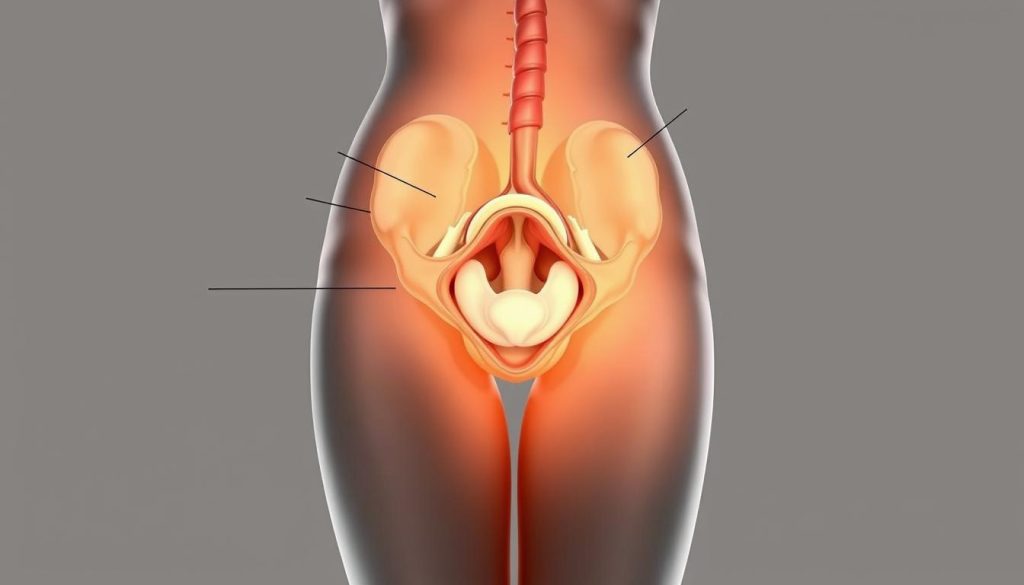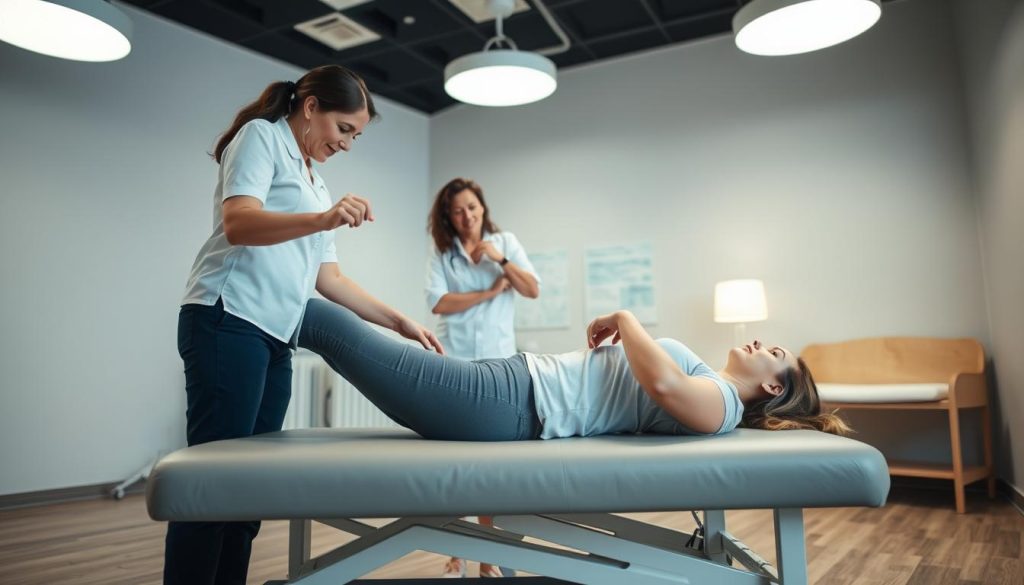Wondering how physical therapy can help treat urinary incontinence in women? In this guide, you’ll learn the types of incontinence, physical therapy techniques used to treat it, and how these methods support long-term recovery—without surgery or medication.
🤖 AI Summary: This article explains how physical therapy can treat urinary incontinence in women by strengthening pelvic floor muscles through techniques like Kegels, biofeedback, and bladder training. It also reviews the types of incontinence, treatment benefits, and how to choose the right pelvic health therapist.
Key Takeaways
- Over 13 million people in the U.S. suffer from urinary incontinence.
- Physical therapy for incontinence provides a non-invasive treatment option.
- Pelvic floor therapy focuses on strengthening muscles for better control.
- Improved bladder function enhances overall women’s health.
- Physical therapy can be a suitable alternative to medications or surgery.
What Is Urinary Incontinence?
Understanding urinary incontinence is crucial for addressing the challenges faced by many women. This condition affects millions and is often misunderstood. An incontinence definition describes it as any involuntary leakage of urine. It often leads to significant bladder control issues that can disrupt daily life and compromise personal confidence.

Defining Urinary Incontinence
Urinary incontinence is not merely an annoyance; it is a common yet serious issue that falls under various categories. Women of all ages may experience this condition due to a range of factors, including pregnancy, childbirth, and menopause. Understanding the specifics helps in identifying appropriate treatments.
Types of Urinary Incontinence
There exist several urinary incontinence types, each with unique characteristics. Recognizing these types is essential for women seeking help:
- Stress Incontinence: Occurs during physical activities like coughing or sneezing.
- Urge Incontinence: Characterized by a sudden and intense urge to urinate, often leading to leakage.
- Overflow Incontinence: Involves a frequent or constant dribble of urine.
- Functional Incontinence: Happens when cognitive or physical impairments hinder the ability to reach the bathroom in time.
Recognizing these women’s health conditions is a significant first step towards treatment and management, allowing for informed decisions and appropriate interventions.
Common Physical Therapy Techniques for Incontinence
Effective management of urinary incontinence often involves targeted physical therapy techniques designed to strengthen pelvic floor muscles and improve overall bladder control. Understanding these techniques can empower individuals to take charge of their health and make informed decisions about their treatment options.
Pelvic Floor Exercises (Kegels)
Kegel exercises focus on tightening and relaxing the pelvic floor muscles. They can significantly improve bladder control and reduce incontinence episodes. Regular practice of Kegel exercises helps enhance muscle strength, which supports the bladder and reduces involuntary leaks.
Biofeedback
Biofeedback therapy utilizes technology to help individuals gain awareness of their pelvic floor functions. Sensors deliver real-time data, allowing users to visualize their muscle movements. This feedback can guide them in performing effective Kegel exercises and optimizing their technique.
Electrical Stimulation
Electrical stimulation involves the use of mild electrical currents to stimulate pelvic floor muscles. This technique can aid in muscle re-education, promoting better strength and coordination. It is especially beneficial for those who find it challenging to perform regular exercises on their own.
Bladder Training
Bladder training programs are systematic approaches that help individuals gradually increase the intervals between urination. This method assists in retraining the brain’s responses to bladder signals, leading to improved control over urinary urges and reducing episodes of incontinence.

Benefits of Physical Therapy for Incontinence
PT Jacksonville offers numerous advantages for women experiencing urinary incontinence. By focusing on tailored exercises and therapeutic techniques, patients can achieve significant incontinence management outcomes. This non-surgical treatment approach not only targets the root causes of incontinence but also contributes to broader quality of life improvement.
Improved bladder and bowel control
One of the primary benefits of physical therapy is enhanced bladder and bowel control. Through specific exercises aimed at strengthening the pelvic floor muscles, women often find they can better manage their symptoms. This targeted approach supports improved coordination and function of both the pelvic and abdominal areas.
Reduced reliance on medications or surgery
Opting for physical therapy as a first line of defense can lead to a notable decrease in the necessity for medications or invasive surgical treatments. Many women report significant progress with their incontinence issues using this holistic method, which emphasizes strengthening and retraining the body.
Improved quality of life
For many, the transition to a life with fewer incontinence issues brings profound emotional and psychological benefits. The quality of life improvement stems from increased confidence, reduced anxiety, and the opportunity to engage in daily activities without fear of leakage. Consequently, trust in social and professional settings often rises, enhancing overall well-being.
Reduced pain and discomfort
Many associated symptoms of urinary incontinence, such as pelvic pain or discomfort, can be alleviated through targeted physical therapy interventions. By focusing on core strengths and muscular balance, patients can experience a reduction in discomfort, leading to an overall sense of relief and better mobility.

Finding a Pelvic Health Physical Therapist
To find a qualified therapist:
- Ask your OB-GYN or primary doctor for referrals
- Search professional directories like APTA’s Pelvic Health Section
- Ask questions like:
- What is your experience with pelvic floor conditions?
- What techniques do you use?
- Can you share patient outcomes?
Building a supportive relationship with your therapist boosts long-term success.

Important Considerations
When exploring considerations for pelvic health therapy, several key factors emerge for those seeking effective solutions for urinary incontinence. Awareness of individual needs plays a crucial role in determining the best course of action. Each person’s symptoms and experiences can vary widely, necessitating a tailored approach to therapy.
- Assessment: Ensure you get a full pelvic health evaluation.
- Goals: Know what you want to achieve (fewer leaks, less urgency, etc.).
- Support System: Enlist a friend or partner for encouragement.
- Expertise: Verify that your therapist specializes in pelvic health.
- Consistency: Stick to your plan and attend follow-up sessions.
Final Thoughts
In summary, physical therapy represents a highly effective avenue for addressing urinary incontinence in women, providing a non-invasive solution to regain control over bladder functions. By enhancing pelvic floor strength through targeted exercises and innovative treatments, patients often find significant improvements in their daily lives. Understanding the benefits of physical therapy can empower women to take charge of their health and well-being.
The journey towards urinary incontinence treatment success is often facilitated by the expertise of qualified professionals who specialize in pelvic health. By seeking support from experienced therapists, individuals can explore personalized approaches that cater to their specific needs. As such, turning to facilities like MOTION RX can serve as a crucial step in achieving a more confident and comfortable lifestyle.
Ultimately, combating urinary incontinence does not have to rely solely on medications or surgical interventions. With the right guidance and commitment to physical therapy techniques, women can unlock exceptional gains in bladder control and overall quality of life.
FAQ
What causes urinary incontinence in women?
Urinary incontinence can be caused by a variety of factors including weak pelvic floor muscles, hormonal changes, pregnancy, childbirth, and certain medical conditions like diabetes. It is often worsened by factors such as obesity, smoking, and high-impact physical activities.
How does physical therapy address urinary incontinence?
Physical therapy focuses on strengthening pelvic floor muscles through targeted exercises, education on proper body mechanics, and techniques such as biofeedback and bladder training. This approach helps patients regain control over their bladder function.
How long does physical therapy for urinary incontinence typically last?
The duration of physical therapy varies depending on individual needs and severity of the condition. Most patients see improvements within a few weeks, while a comprehensive treatment plan might span several months to ensure lasting results.
Are there any risks associated with physical therapy for urinary incontinence?
Physical therapy is a non-invasive treatment with minimal risks. However, it is essential to work with a trained pelvic health physical therapist who can tailor exercises to your needs and monitor your progress effectively.
Can pelvic floor exercises be done at home?
Yes, pelvic floor exercises, such as Kegels, can often be performed at home. However, it is advisable to receive guidance from a physical therapist on proper technique to ensure effectiveness and prevent injury.
What should I expect during my first appointment?
During your initial appointment, a pelvic health physical therapist will review your medical history, assess your pelvic floor strength, and develop a personalized treatment plan based on your unique needs and goals.
Is physical therapy covered by insurance?
Many insurance plans cover physical therapy for urinary incontinence, but coverage can vary. It’s best to check with your insurance provider to confirm your benefits and any necessary referrals.



